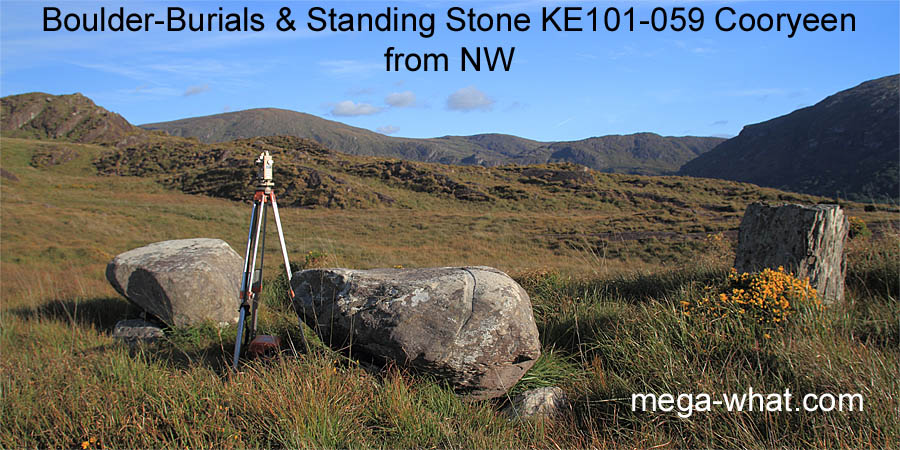 Cooryeen Boulder-Burials are in Gleninchaquin, about 10km south-west of Kenmare, 8km north-east of Lauragh as the crow flies.
Cooryeen Boulder-Burials are in Gleninchaquin, about 10km south-west of Kenmare, 8km north-east of Lauragh as the crow flies.
Two boulder-burials have been set about 2m apart on a low ridge top. Standing stone KE101-059003 is c.3m to the south-west.
South is in a dip between two hilltops where it coincides with major standstillLunistice positions vary cyclically over an 18.6 year period but are fairly static for more than a year at either end of the range upper limb [Pic].
North is indicated by the right-hand end of a hilltop [Pic].
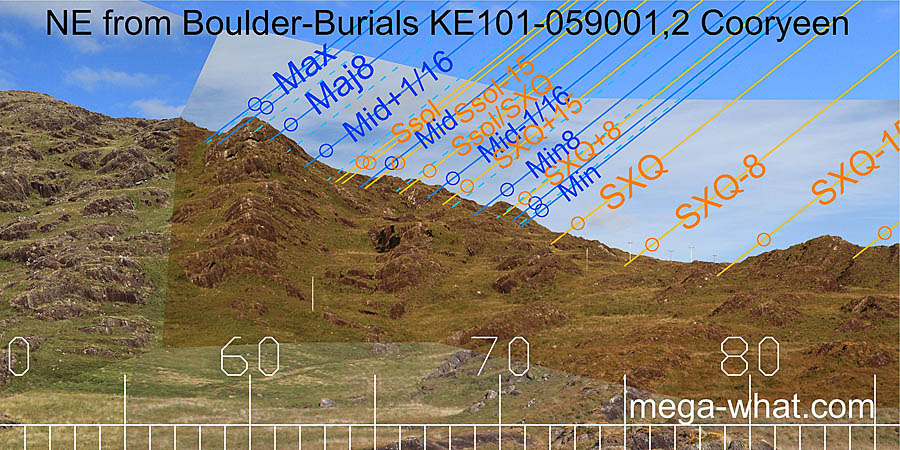 To the north-east a local rocky ridge has been optimised for the lunisticeLunistices are the most northerly and southerly moons of the month. The lunar equivalent of solstices - more.
range.
To the north-east a local rocky ridge has been optimised for the lunisticeLunistices are the most northerly and southerly moons of the month. The lunar equivalent of solstices - more.
range.
It would have determined the exact position of the monuments and is nicely precise for the major standstillLunistice positions vary cyclically over an 18.6 year period but are fairly static for more than a year at either end of the range.
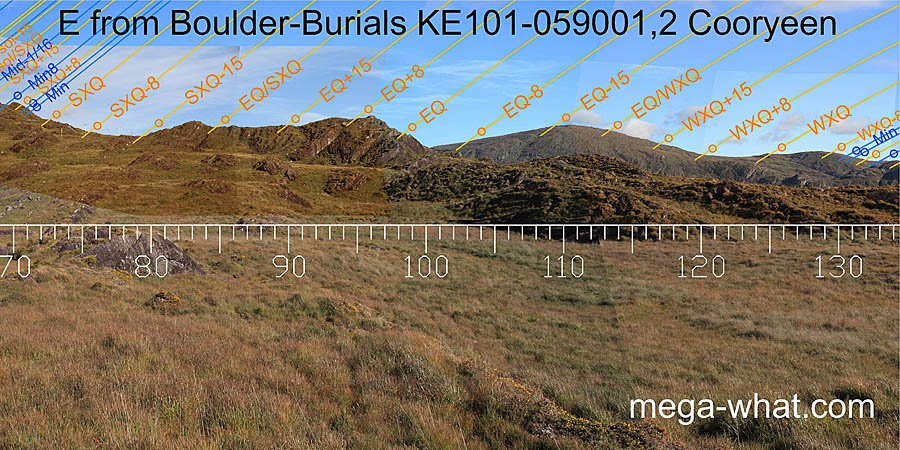 Eastwards, the equinox, cross-quarters and equinox / cross-quarter midpoints are all at steps.
Eastwards, the equinox, cross-quarters and equinox / cross-quarter midpoints are all at steps.
The eastern boulder's axis is generally equinoctial but not specific [Pic].
The Standing Stone axis indicates a period of about two weeks before spring equinox [Pic].
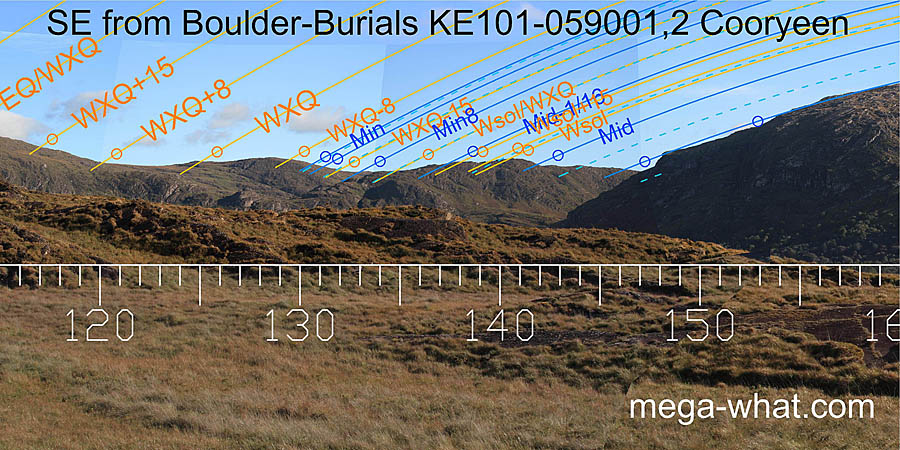 Winter solstice sun rises from a hilltop with mid-cycle lunisticesLunistices are the most northerly and southerly moons of the month. The lunar equivalent of solstices - more.
rising from its basal step.
Winter solstice sun rises from a hilltop with mid-cycle lunisticesLunistices are the most northerly and southerly moons of the month. The lunar equivalent of solstices - more.
rising from its basal step.
The the left slope of the southern hill is a sensitive indicator for the next lunar sixteenth.
The central dip of this southern hill is a very sensitive marker for major standstillLunistice positions vary cyclically over an 18.6 year period but are fairly static for more than a year at either end of the range [Pic].
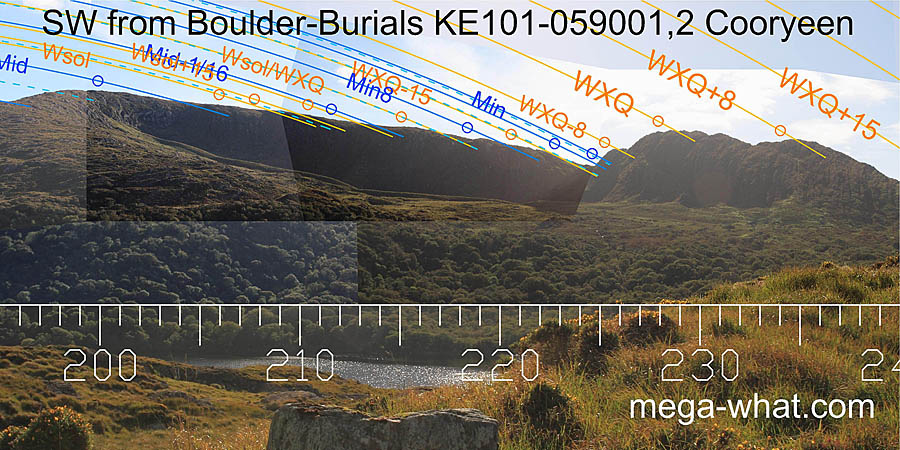 The undulations of the southern hill's right slope provide useful markers with minor standstill turning at the basal step and winter cross-quarters on the next hilltop.
The undulations of the southern hill's right slope provide useful markers with minor standstill turning at the basal step and winter cross-quarters on the next hilltop.
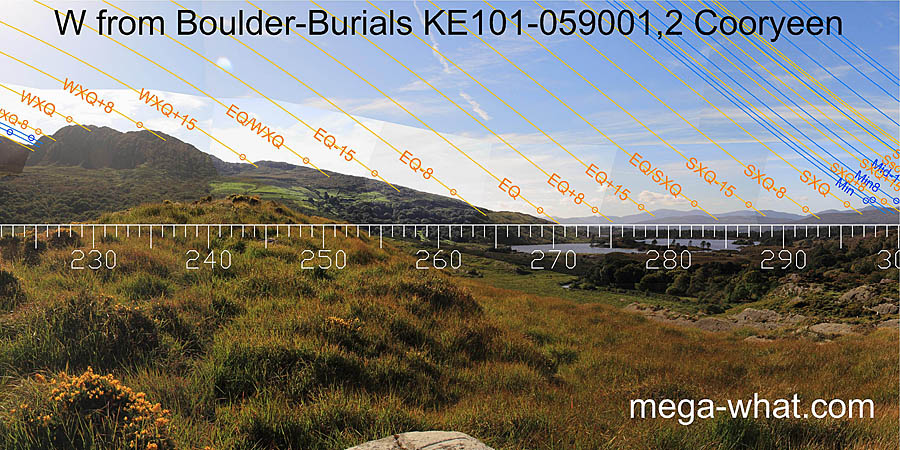 From winter cross-quarters on a hilltop, the south-western ridge descends to the equinox at the bottom.
From winter cross-quarters on a hilltop, the south-western ridge descends to the equinox at the bottom.
The equinox / summer cross-quarter midpoint has a hilltop to mark it, the winter one is at a slight step.
The Standing Stone axis is well north of the equinox, perhaps indicating the equinox / cross-quarter midpoint [Pic]. The capstone of the western boulder is not a good pointer.
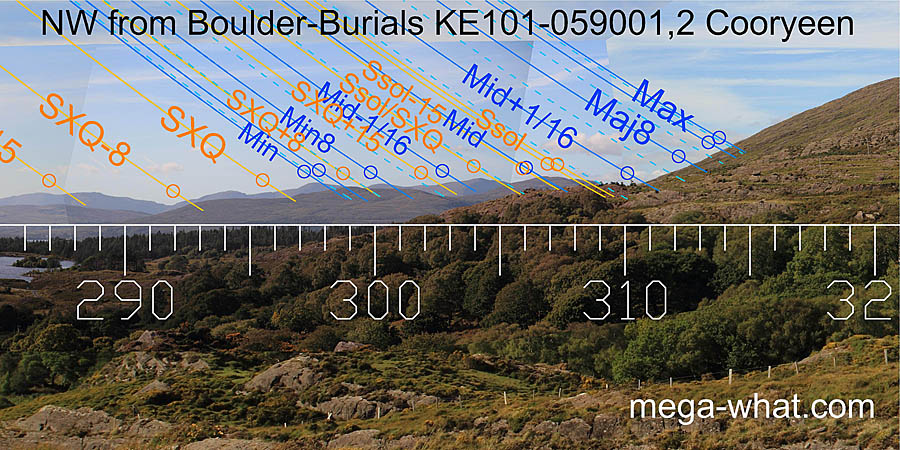 To the north-west, summer cross-quarters are marked by a gap between two hilltops. Summer solstice is on the last distant hilltop and
the intersect with local ground marks the lunar sixteenth of the major side of mid-cycle, mirroring the south-east.
To the north-west, summer cross-quarters are marked by a gap between two hilltops. Summer solstice is on the last distant hilltop and
the intersect with local ground marks the lunar sixteenth of the major side of mid-cycle, mirroring the south-east.
- Uragh Five Stone Circle is c.700m south-west (252°)
- Uragh Multi Stone Circle & Boulder-Burials are c.1.4km south-west (243°)
- Drombohilly Stone Circle is c.5.5km south-west (238°)
References
- Archaeological Survey of Ireland, record details. www.archaeology.ie/archaeological-survey-ireland

